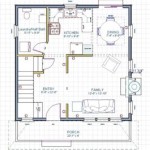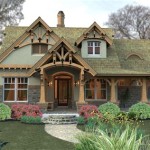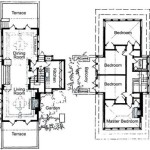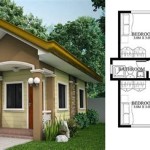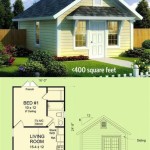Six-Bedroom Home Floor Plans: Design Considerations and Potential Layouts
Six-bedroom home floor plans represent a significant investment in space and design. These plans are typically sought after by large families, multi-generational households, or those who desire ample room for guests, home offices, and recreational activities. The design process requires careful consideration of several elements, including the overall footprint of the house, the flow of traffic between rooms, the privacy afforded to each bedroom, and the integration of common living areas. This article will explore different aspects of six-bedroom home floor plans, examining key design considerations and presenting potential layouts.
The size and shape of the lot often dictate the initial parameters of the floor plan. A wide, shallow lot may lend itself to a ranch-style layout with bedrooms spread across a single level. A narrower, deeper lot could be more suitable for a two-story design, which maximizes square footage on a smaller footprint. Multi-story designs need to account for staircases, which consume valuable floor space and should be strategically positioned to minimize disruption to the overall flow of the house. Furthermore, local building codes and zoning regulations can impose restrictions on the height and setback of the building, which must be considered during the design phase.
Budgetary constraints also play a crucial role in determining the feasibility of different floor plan options. The size of the house directly impacts the cost of materials and labor. More complex designs, with intricate rooflines or custom architectural details, will generally be more expensive to build. Therefore, it is important to prioritize needs and wants, making informed decisions about the features that are most important to the homeowners. Selecting cost-effective materials and streamlining the design can help to keep the project within budget.
Space Allocation and Room Functionality
The allocation of space within a six-bedroom home requires careful planning to ensure optimal functionality and comfort. The master bedroom suite is typically designed to be the largest and most luxurious of the bedrooms, often incorporating a private bathroom, walk-in closet, and potentially a sitting area or dressing room. Secondary bedrooms can be smaller, but should still provide adequate space for a bed, desk, and closet. The number and configuration of bathrooms is another important consideration. A well-designed six-bedroom house should have at least three full bathrooms, and potentially more, to accommodate the needs of a larger household.
The design of common living areas also requires careful attention. The kitchen is often considered the heart of the home, and should be designed to be both functional and aesthetically pleasing. An open-concept kitchen, dining, and living area can create a sense of spaciousness and facilitate social interaction. However, it is also important to consider the acoustics of the space, as noise from the kitchen can easily travel to other areas of the house. A separate family room or den can provide a more private space for relaxation and entertainment.
Other important spaces to consider include home offices, playrooms, and mudrooms. With the increasing prevalence of remote work, a dedicated home office has become a valuable asset. A well-designed home office should be located in a quiet area of the house and provide adequate space for a desk, computer, and storage. Playrooms can be a great way to keep children entertained and organized, while mudrooms can help to keep the house clean and tidy by providing a place to store shoes, coats, and other outdoor gear.
Privacy and Noise Reduction
Maintaining privacy and minimizing noise levels are essential considerations in a six-bedroom home floor plan. The layout should be designed to provide adequate separation between bedrooms, especially the master bedroom and guest bedrooms. One common strategy is to locate the master bedroom on one side of the house and the secondary bedrooms on the other side. The use of hallways and buffer zones can also help to reduce noise transmission between rooms.
The selection of building materials can also play a significant role in noise reduction. Insulating walls and floors with soundproofing materials can help to dampen noise and create a more peaceful environment. Solid-core doors are more effective at blocking sound than hollow-core doors. Double-paned windows can also help to reduce noise from outside. The placement of mechanical equipment, such as HVAC systems and water heaters, should be carefully considered to minimize noise pollution. Locating these units in a basement or garage can help to isolate noise from living areas.
Window placement and orientation should also be considered to maximize natural light while minimizing glare and heat gain. South-facing windows provide the most natural light throughout the year, while east-facing windows can provide morning sunlight. West-facing windows can be problematic, as they can cause excessive heat gain in the afternoon. The use of window coverings, such as blinds or curtains, can help to control light and heat gain. The placement of windows should also be carefully considered to preserve privacy from neighbors.
Accessibility and Future Adaptability
Designing a six-bedroom home to be accessible and adaptable for future needs is a wise long-term investment. Incorporating universal design principles can make the home more comfortable and convenient for people of all ages and abilities. These principles include wider doorways and hallways, lever-style door handles, roll-in showers, and grab bars in bathrooms. A zero-step entry can eliminate the need for ramps or stairs, making the home more accessible for people with mobility limitations.
Consideration should also be given to the potential for future modifications. Spaces can be designed to be easily converted to different uses as the needs of the family change. For example, a bonus room above the garage could be converted into a home office, a guest bedroom, or an in-law suite. A basement can be finished to add additional living space, such as a recreation room, a home theater, or a gym. Designing the home with flexible spaces can increase its long-term value and utility.
The integration of smart home technology can also enhance accessibility and adaptability. Smart lighting systems can be controlled remotely, making it easier for people with mobility limitations to adjust the lighting in their home. Smart thermostats can be programmed to automatically adjust the temperature based on the time of day or the occupancy of the house. Smart security systems can provide added peace of mind and security. By incorporating these technologies into the design, the home can be made more comfortable, convenient, and secure for all occupants.
In summary, designing a six-bedroom home floor plan involves a complex interplay of considerations related to space allocation, privacy, accessibility, and budget. Prioritizing functionality, optimizing space utilization, and planning for future adaptability are key to creating a comfortable and sustainable living environment.

Images By Jessica Herbert On 6 Bedroom Floor Plans 33e

6 Bedroom House Plans Houseplans Blog Com

Cool 6 Bedroom House Plans Luxury New Home Design

6 Bedroom House Plans Houseplans Blog Com

6 Bedroom House Plans Designs Montgomery Homes 25 Display In Nsw

6 Bedrooms And 5 Baths Plan 7023

The Best 6 Bedroom Barndominium Floor Plans

Ghylls Lap 6 Bedroom House Design Designs Solo Timber Frame Homes

Beach Style House Plan 6 Beds 5 Baths 10605 Sq Ft 27 462 Houseplans Com

6 Bedroom Double Y Homes To Suit A 16m Wide Lot Clarendon



